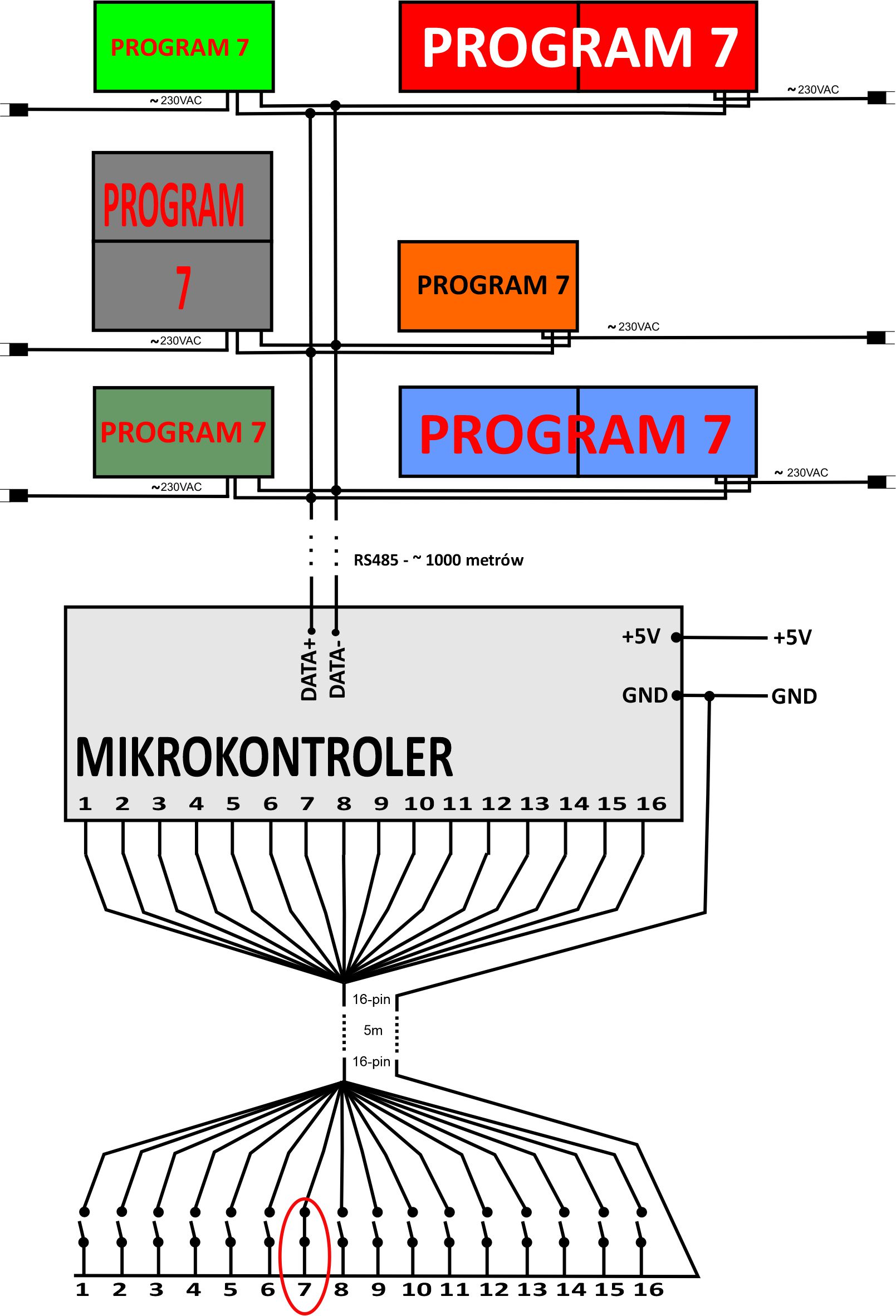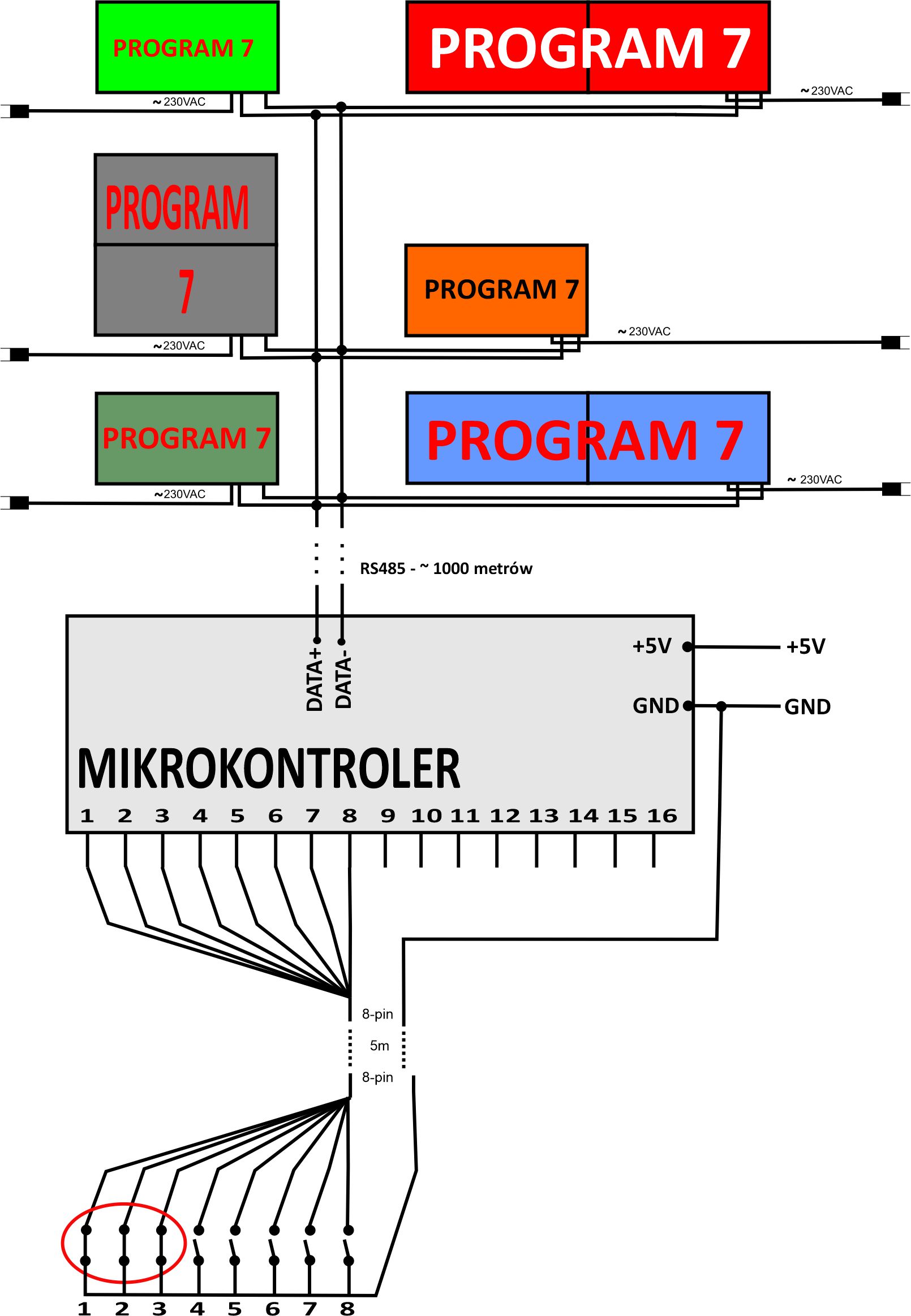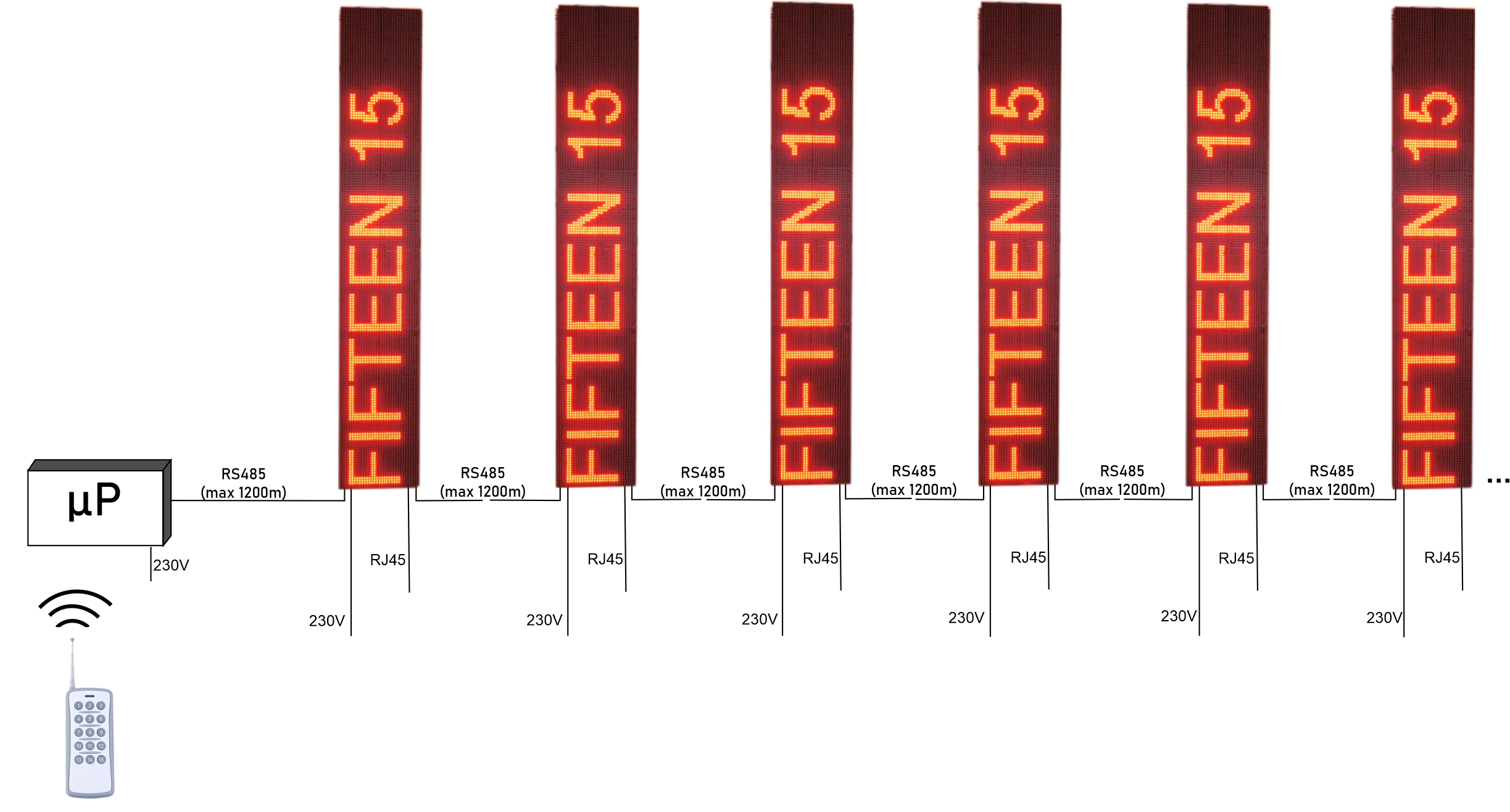NO-NC RS485 CONTROL
There are two basic variants of program control via the RS485 interface:
16-pin control (programs triggered by shorting the appropriate pin to GND ground) - the ability to handle up to 17 programs.
8-pin binary control (programs triggered by shorting the appropriate pins to GND ground) - the ability to handle up to 256 programs.
Any display models are connected to the microprocessor with a two-wire cable for RS485 transmission. The microprocessor, on the basis of shorting pins to ground, sends information to the controllers about the number of the displayed program. Different content can be entered individually for each display. Displays can be of different sizes and types, e.g. single-color and color with different types of modules.
A short to ground of pins can be implemented in several options:
1. There are wires that the user connects to the control machine, or relays, buttons, etc.
2. Radio remote control with transmitters (range of the remote control several hundred meters).
3. A system with optocouplers enabling control by applying DC voltage, e.g. 12V or 24V.
In the example above, information will be sent to the display drivers - display program number 7.
For the 16-pin variant, we distinguish the following sub-variants:
16pin - shorting pin1 - runs the first program, etc. to pin16. In the event of a short-circuit of several at the same time, the program is executed under the pin that was shorted first. When the pins are open then program 17
16pin - shorting pin1 - runs the first program, etc. to pin16. In the case of a short-circuit of several at the same time, the program is executed under the pin that is shorted the lowest. i.e. pin1, when the pins are open then program 17
16pin - shorting pin1 - runs the first program, etc. to pin16. In the case of a short-circuit of several at the same time, the program is executed under the pin that is shorted the most. ie pin16 When the pins are open then program 17
In the example above, information will be sent to the display drivers - display program number 7.
For the 8-pin binary variant, we distinguish the following sub-variants:
4. 8pin - shorted, 0-open, 1-closed. Example: 0000001 – program "1" displayed. 10011001 - program "153" displayed. When the pins are open, program 255.
5. 8pin - shorted, 0-open, 1-closed. Example: 0000001 – program "1" displayed. 10011001 - program "153" displayed. When the pins are open, the last set program is displayed.
Table of logic states for the 8-pin binary variant with examples:
| PINS | 8 | 7 | 6 | 5 | 4 | 3 | 2 | 1 | |
| BIT | B7 | B6 | B5 | B4 | B3 | B2 | B1 | B0 | |
|
VALUE |
128 | 64 | 32 | 16 | 8 | 4 | 2 | 1 | |
|
EXAMPLE 1 |
O 0 |
X 64 |
O 0 |
O 0 |
O 0 |
X 4 |
O 0 |
O 0 |
PROGRAM 68 |
|
EXAMPLE 2 |
O 0 |
O 0 |
O 0 |
O 0 |
O 0 |
O 0 |
X 2 |
X 1 |
PROGRAM 3 |
|
EXAMPLE 3 |
O 0 |
O 0 |
O 0 |
O 0 |
X 8 |
O 0 |
X 2 |
O 0 |
PROGRAM 10 |
|
EXAMPLE 4 |
X 128 |
X 64 |
X 32 |
X 16 |
O 0 |
X 4 |
X 2 |
X 1 |
PROGRAM 248 |
O - pin open to GND
x - pin short to GND
Below is an example of one of the implementations.
GR-205 (32x160cm) (32x160px) and GR103 (16x96) (16x96px) displays equipped with a driver with communication protocol.
Each display is programmed via Ethernet, and the program change is triggered by a radio remote control.
In the "uP" box there is a radio signal receiver with a dozen relays - the short circuit of any of them is transferred to the processor which sends a data frame through the RS485 interface to each display with information about the program number to be displayed - each display can have other content loaded - no must display identical information.
The displays can be mixed of any type, e.g. full color with high resolution with uploaded animations and single-color text displays.
As an option, instead of closing the NO-NC contacts, you can choose voltage control, e.g. 12V or 24V.




_thumb.png)
_thumb.png)
_thumb.png)



